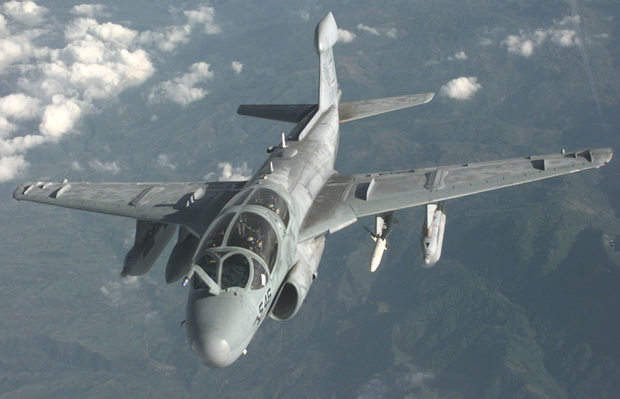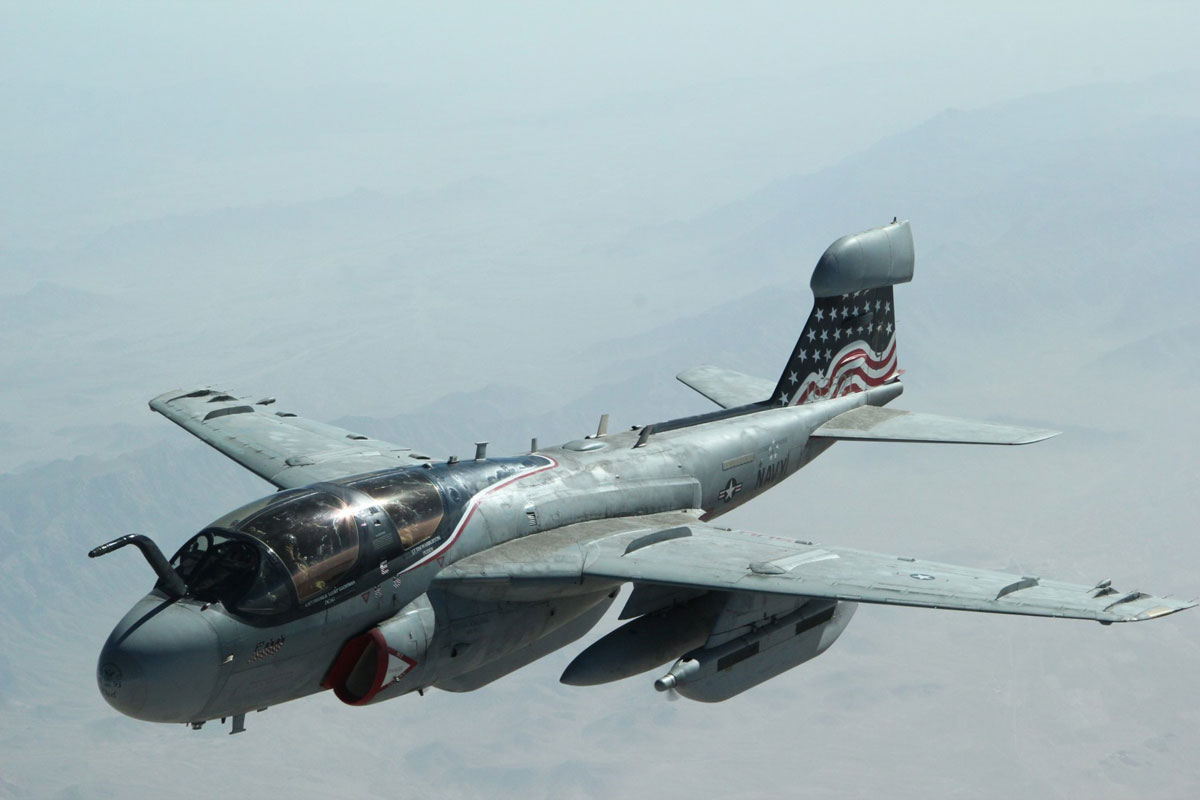The EA-6B Prowler, an iconic aircraft that played a critical role in the U.S. military’s electronic warfare capabilities for nearly five decades, has officially taken its final bow. Known for its distinctive design and unparalleled ability to jam enemy radar and communications, the Prowler’s retirement marks the end of an era in aerial warfare.
A History of Excellence
First introduced in the late 1960s, the EA-6B Prowler was developed as an advanced electronic warfare aircraft designed to protect U.S. Navy and Marine Corps pilots from enemy radar and surface-to-air missiles. Its mission was simple yet crucial: disrupt and disable the enemy’s ability to track and target American aircraft, effectively rendering them invisible.
Over the years, the Prowler proved itself time and again in various conflicts, from the Vietnam War to Operation Desert Storm and beyond. Its effectiveness in electronic warfare made it an indispensable asset in the U.S. military’s arsenal, earning it a revered status among aviators and military strategists alike.

Cutting-Edge Technology
What set the EA-6B apart from other aircraft was its sophisticated suite of electronic countermeasures. Equipped with powerful jamming pods and communication intercept systems, the Prowler could effectively “blind” enemy defenses, ensuring safe passage for allied forces. Its ability to disrupt enemy radar, communications, and even electronic detonations made it a vital part of many U.S. military operations.
The Prowler’s crew of four, including a pilot and three electronic countermeasures officers (ECMOs), worked in perfect harmony to operate the aircraft’s complex systems. The aircraft’s design allowed it to perform a wide range of missions, from escorting strike packages to providing stand-off jamming for entire battle groups.
A Storied Combat Record
The EA-6B Prowler’s combat record is a testament to its capabilities. During Operation Desert Storm, Prowlers flew more than 4,600 flight hours, providing electronic warfare support that was crucial to the coalition’s success. The aircraft also played a key role in NATO operations during the Kosovo conflict, where it helped suppress enemy air defenses and allowed allied aircraft to operate with impunity.
The Prowler’s service extended into the 21st century, where it continued to be a vital asset in the Global War on Terror. From the skies over Iraq and Afghanistan, the Prowler provided critical electronic warfare support, jamming insurgent communications and disabling improvised explosive devices (IEDs) from a distance.

The Legacy of the Prowler
As the EA-6B Prowler is retired from service, it leaves behind a legacy that few aircraft can match. Its contribution to the safety and success of countless military operations is undeniable, and its absence will be felt by those who relied on its unique capabilities. However, the Prowler’s retirement also marks the beginning of a new chapter in electronic warfare, as newer, more advanced aircraft like the EA-18G Growler take up the mantle.
Honoring the Prowler
In ceremonies across the country, veterans, pilots, and aviation enthusiasts have gathered to pay tribute to the Prowler’s service. Many of those who flew and maintained the aircraft have shared stories of its reliability, power, and the unique camaraderie that developed among its crews. For them, the Prowler was more than just a machine—it was a protector, a lifeline, and a symbol of American air superiority.

Looking Forward
With the EA-6B Prowler’s retirement, the focus now shifts to the future of electronic warfare. The EA-18G Growler, a modern successor equipped with state-of-the-art technology, has already begun to fill the role left by the Prowler. While the Growler represents the next generation of electronic warfare, it does so standing on the shoulders of the Prowler’s towering legacy.
As we bid farewell to the EA-6B Prowler, we remember an aircraft that not only protected lives but also shaped the course of modern warfare. Its story will continue to inspire future generations of aviators and engineers, ensuring that the spirit of the Prowler lives on in the skies above.





